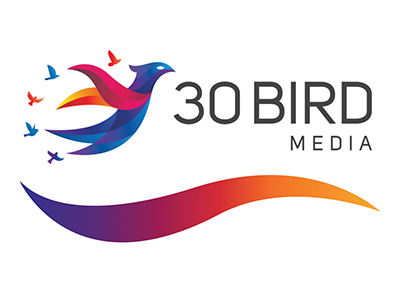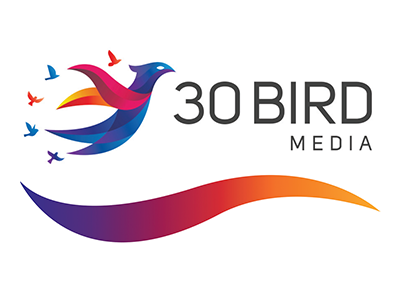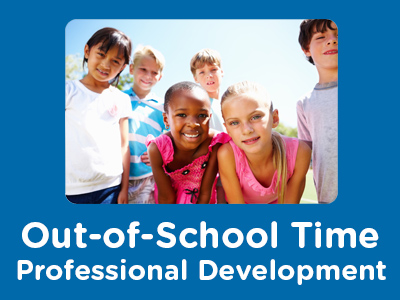 |
Cyberbullying |
1.00 |
Cyberbullying is bullying that takes place over digital devices like cell phones, computers, and tablets. Cyberbullying can occur through SMS, text, and apps, or online in social media, forums, or gaming where people can view, participate in, or share content. Cyberbullying includes sending, posting, or sharing negative, harmful, false, or mean content about someone else. It can include sharing personal or private information about someone else, causing embarrassment or humiliation. Some cyberbullying crosses the line into unlawful or criminal behavior.
In this course, you will:
• Learn the definition of cyberbullying
• Discover tactics on preventing cyberbullying
• Discover tips on communicating with parents and teachers, and how to report instances of cyberbullying |
 |
CWNP Certified Wireless Technician CWT-101 Exam Prep |
1.00 |
Exam Prep to accompany 30 Bird's CWNP Certified Wireless Technician - Exam CWT-101 course. |
 |
CWNP Certified Wireless Technician - Exam CWT-101 |
8.00 |
This entry-level certification (Certified Wireless Technician - Exam CWT-101) is offered by Certified Wireless Network Professionals, or CWNP, as part of a vendor-neutral wireless certification program.
According to CWNP, the Certified Wireless Technician (CWT) should be able to install APs based on a design document, configure the AP for initial operations and ensure connectivity, troubleshoot basic problems, and assist users in-person or through remote communications in problem resolution. Perhaps the most important skill is the ability to set up a WLAN client for connectivity, including SSID configuration, security settings, and other client adapter settings. |
 |
CWNP Certified Wireless Specialist CWS-101 Exam Prep |
1.00 |
Exam Prep to accompany 30 Bird's CWNP Certified Wireless Specialist - Exam CWS-101 course. |
 |
CWNP Certified Wireless Specialist - Exam CWS-101 |
8.00 |
Certified Wireless Specialist - Exam CWS-101 covers the fundamentals Wireless Fidelity (Wi-Fi) technologies for wireless communications. The student will learn the basics of how Radio Frequencies (RF) are utilized by Wi-Fi with hardware and software to create wireless local area networks (WLANs). Upon completion of this course, the student will have the knowledge required for the CWS-101 exam and CWS certification.
This vendor neutral course assumes that the student has a basic knowledge of using wireless computing devices and wireless networks. The exam objectives are marked throughout the course, with applicable acronym and objective indexes. |
 |
Customer Service: Using What You've Learned (Corrections) |
0.25 |
This course will provide you with the information and—we hope—the inspiration to improve your customer service skills and work toward personal success. The final two steps are up to you: You must implement what you have learned, and continue to work on improving your skills. |
 |
Customer Service: Using What You've Learned |
0.25 |
This course will provide you with the information and—we hope—the inspiration to improve your customer service skills and work toward personal success. The final two steps are up to you: You must implement what you have learned, and continue to work on improving your skills. |
 |
Customer Service: Responding |
1.00 |
After the greeting, listening, and questioning phases, the next phase is responding to a customer. Once you clearly understand a situation, your response will set the tone for the interaction. Without handling situations properly and without the right level of care, you can upset customers and ultimately drive them away. Responses must be timely and within expectations. If a customer is discussing a problem with you, then you know that at least one of that person’s expectations has not been met. |
 |
Customer Service: Listening and Questioning |
0.75 |
This topic will discuss the various types of listening: passive, selective, and active. You will learn that paraphrasing or summarizing what the customer says is a good way to confirm what you hear. In this course, you will also learn about questioning and the types of questions that are used to elicit the information you want from customers. There are four types of questions: open-ended, closed, alternative-choice, and clarifying. This course will also discuss the examination process that can be used to understand the customer’s problem and prescribe a realistic solution. |
 |
Customer Service: Greeting Customers |
1.00 |
Answering the phone when you know that you might be on the wrong end of a verbal confrontation is difficult, but it’s the first step in dealing with customer service issues. How you answer the phone will set a tone with the customer on the other end. Greeting a customer requires much more than a simple “Hello, how can I help you?” |
 |
Customer Service: Customer Service Skills |
1.00 |
A great customer service representative should have skills in three key areas: organization (time and stress management), motivation (letting customers know you care), and communication (vocal, verbal, and visual). The core strength of a good customer service rep is sound knowledge of the organization’s products and services. |
 |
Customer Service: Customer Service Basics |
0.75 |
It is amazing how much time, effort, and money is invested in sales education. However, customer service is not given the same level of resources. If you think about selling as a process, the final phase is not closing the sale, it’s serving the customer. After an effective sales process awards you a new customer, it is customer service that will determine whether your customer stays with you. |
 |
Customer Service Skills |
1.00 |
This course will help you develop customer service skills by teaching you how to develop and maintain a positive attitude. You will learn how to use motivation to improve customer service skills, and will go through the seven steps in the customer service process. Finally, you will discover how to react to customers’ problems and learn from them. |
 |
Customer Service Fundamentals |
1.00 |
In this course, you will learn about the importance of customer service and the pitfalls to avoid when providing customer service. This includes how to identify types of customers and their needs. Then, you’ll learn about building rapport with your customers through good customer service habits. Part of building rapport includes effective communication with customers, including how to correct a customer, the importance of body language and tone, and about telephone etiquette. You’ll learn how to respond to your customers and how to use questions. Then, you will be instructed about how to accentuate the positive and provide proactive service. Finally, you will learn how to surpass expectations by going the extra mile for the customer. |
 |
Customer Management |
1.00 |
This course will teach you about handling dissatisfied customers. You will learn how to maintain composure and be professional through both verbal and nonverbal communication. You’ll learn the difference between upset and angry customers and how to handle each. With angry customers, you will learn how to listen, remain calm, avoid negative filters, and express empathy. Then, with upset customers, you’ll be taught methods for making your service to them more effective. Finally, you will learn how to manage, recognize, and reduce your own stress to better serve your customers. |
 |
Customer Communication |
1.00 |
In this course, you will learn about the importance of clear customer communication and effective listening. You’ll hear about some guidelines to help you communicate clearly, as well as the importance of non-verbal aspects of communication. You will learn how to provide good service on the telephone and will go through a three-step process for providing quality telephone service. You’ll also learn about telephone etiquette, including taking messages and how to effectively use voicemail. Finally, you’ll learn how to compose effective email messages. |
 |
Current Trends and Issues in Out-of-School Time Programs: Needs & Benefits |
0.67 |
It is important for school-age care professionals to understand how the field has developed since its inception, and to be knowledgeable about the current status of the field of school-age care. With this knowledge and understanding, it is possible for school-age care professionals to participate in shaping the field as it grows in the future. In this course, we will explore needs and benefits in out-of-school time programs. |
 |
Current Trends and Issues in Out-of-School Time Programs: Growth & Change |
0.67 |
It is important for school-age care professionals to understand how the field has developed since its inception, and to be knowledgeable about the current status of the field of school-age care. With this knowledge and understanding, it is possible for school-age care professionals to participate in shaping the field as it grows in the future. In this course, we will explore growth and change in out-of-school time programs. |
 |
Current Trends and Issues in Out-of-School Time Programs: Funding & Support |
0.67 |
It is important for school-age care professionals to understand how the field has developed since its inception, and to be knowledgeable about the current status of the field of school-age care. With this knowledge and understanding, it is possible for school-age care professionals to participate in shaping the field as it grows in the future. In this course, we will explore funding and support issues in out-of-school time programs. |
 |
Current Trends and Issues in Out-of-School Time Programs (Collection) |
2.00 |
It is important for OST professionals to understand how the field has developed since its inception and to be knowledgeable about the current status of the OST field. With this knowledge and understanding, it is possible for OST professionals to participate in shaping the field as it grows in the future.
The field of OST is growing and changing as national researchers learn more about what works best in OST programs for a wide range of children and youth, their families, and their communities. Other positive changes are occurring as advocates for OST succeed in creating more public awareness about the need to make quality OST services available to all children and youth across the country. In addition, the OST field is undergoing a metamorphosis as experienced professionals in several different disciplines and fields share and contribute their knowledge, skills, and insights with the goal of creating national models that represent the best possible OST programs.
In this climate of change, OST programs face a number of important issues, revolving around the availability, affordability, and accountability of programs. Many national trends and issues have implications for OST at the state and local level. When OST professionals are well informed about national developments in the field, they can become more effective OST advocates as they design and implement high quality, sustainable programs that are responsive to youth, family, and community needs. |
 |
Current Trends and Issues in Out-of-School Time Programs |
2.00 |
It is important for OST professionals to understand how the field has developed since its inception and to be knowledgeable about the current status of the OST field. With this knowledge and understanding, it is possible for OST professionals to participate in shaping the field as it grows in the future.
The field of OST is growing and changing as national researchers learn more about what works best in OST programs for a wide range of children and youth, their families, and their communities. Other positive changes are occurring as advocates for OST succeed in creating more public awareness about the need to make quality OST services available to all children and youth across the country. In addition, the OST field is undergoing a metamorphosis as experienced professionals in several different disciplines and fields share and contribute their knowledge, skills, and insights with the goal of creating national models that represent the best possible OST programs.
In this climate of change, OST programs face a number of important issues, revolving around the availability, affordability, and accountability of programs. Many national trends and issues have implications for OST at the state and local level. When OST professionals are well informed about national developments in the field, they can become more effective OST advocates as they design and implement high quality, sustainable programs that are responsive to youth, family, and community needs. |
 |
Culturally Responsive Teaching for Teachers |
0.75 |
This course covers the concept of culturally responsive teaching. It is just one of many courses we offer. This course will help you develop new knowledge about culture and how it impacts student learning. It will teach you how to include culturally responsive strategies in the classroom and the benefits they have. |
 |
Culturally Responsive Teaching |
1.00 |
This course covers the concept of culturally responsive teaching. It is just one out of many paraprofessional and teacher courses we offer. This course will help you develop new knowledge about culture and how it impacts student learning. It will teach you strategies on how to include culturally responsive strategies in the classroom and the benefits they have. It will also help you understand what your role might look like in culturally responsive teaching practices. |
 |
Cultural Diversity in School Settings |
1.00 |
This course contains definitions of diversity, equity, and inclusion (DEI) and the role DEI plays in the school setting. Embracing diversity, equity, and inclusion benefits everyone within a K-12 institution: faculty, staff, students, and families.
Learners will reflect on the different elements of their own identity and how that impacts their perception of others. This course will also discuss the role of bias in the school setting. |
 |
Cultural Competency for Children and Families (CDA 4) |
2.00 |
As classrooms and communities reflect our increasingly interconnected world, cultural understanding becomes essential for educators. This course equips you with the knowledge and tools to navigate the spectrum of cultural awareness, sensitivity, responsiveness, and competence. Together, we'll explore impactful practices for fostering inclusive environments and culturally competent approaches that empower children and families. |


























